 EN
EN
 PT
PT
Practical guidelines for secondary school education
Product: Book
Trim size in cm: 20x27cm
Pages: 400
ISBN: 9788859042365
Publication date: 01/03/2025
REQUEST A SAMPLE OR MORE INFORMATION
Autism and Adolescence is a comprehensive and practical guide for teachers, educators, and professionals, providing concrete tools to support the educational challenges faced by autistic adolescents.
This book presents a theoretical and operational approach, integrating insights from leading Italian and international experts. It combines scientific explanations with psychoeducational and teaching strategies, offering a clear overview of how autism manifests during adolescence. The book provides practical guidance on managing challenging behaviours, social interactions, activity planning, and fostering independence. It is structured into five sections, each enriched with concept maps, in-depth boxes, and summary sections.
A key focus of the book is the collaboration between schools, families, and local services, highlighting the importance of building a support network to ensure the well-being and personal development of autistic students.
Introduction
SECTION 1 – DIAGNOSTIC FRAMEWORK AND FUNCTIONING
Introduction
Chapter 1 – Characteristics of Autism Spectrum Disorder
Chapter 2 – Aetiology, Epidemiology, and Neurobiological Basis
Chapter 3 – Diagnosis, Levels of Support, and Functioning
Chapter 4 – Adolescence and Puberty
Chapter 5 – Gender Differences in Autism
SECTION 2 – SOCIAL INTERACTION AND RELATIONSHIPS
Introduction
Chapter 6 – Socialisation and Interactions with Peers and Adults
Chapter 7 – Affectivity and Sexuality
Chapter 8 – Bullying, Cyberbullying, and the Role of Social Networks in Autism
Chapter 9 – Autism and Leisure Activities
Chapter 10 – Autism and Social Skills Learning: The SAR Approach
SECTION 3 – COMMUNICATION AND LANGUAGE
Introduction
Chapter 11 – Autism and Communication
Chapter 12 – Communication and Language Interventions
Chapter 13 – Mobile Applications and AAC (Augmentative and Alternative Communication)
Chapter 14 – A Different Way of Communicating
SECTION 4 – AUTONOMY AND ORIENTATION
Introduction
Chapter 15 – Developing Personal Independence
Chapter 16 – Self-Determination and Quality of Life
Chapter 17 – Motor Skills in Autism: From Movement to Imagination
Chapter 18 – Education and Employment Integration
Chapter 19 – Life Planning
SECTION 5 – COGNITIVE, NEUROPSYCHOLOGICAL, AND LEARNING DIMENSIONS
Introduction
Chapter 20 – Cognition and Learning in Autistic Adolescents
Chapter 21 – Individualised Education Plans (IEPs) and Personalised Learning
Chapter 22 – Classroom Organisation and Learning Environments
Chapter 23 – Educational and Enabling Interventions
Chapter 24 – Technology for Learning: Applications and Educational Video Games for Autism
Bibliography and Online Resources

EACH GUIDE OFFERS A PROGRAMME IN 4 STAGES
 KNOWING, OBSERVING, EVALUATING
Clear and exhaustive definition of the disorder, diagnostic criteria, integration of children in class, the evaluation process
KNOWING, OBSERVING, EVALUATING
Clear and exhaustive definition of the disorder, diagnostic criteria, integration of children in class, the evaluation process
 PLANNING AND PUTTING INTO ACTION
Strategies and practical interventions to be enacted at school to deal effectively with teaching and educational special needs
PLANNING AND PUTTING INTO ACTION
Strategies and practical interventions to be enacted at school to deal effectively with teaching and educational special needs
 REFLECTING ON AND UNDERSTANDING
Consequences in the spheres of emotions, relationships, self-esteem and self-perception
REFLECTING ON AND UNDERSTANDING
Consequences in the spheres of emotions, relationships, self-esteem and self-perception
 JOINING FORCES AND SHARING
Strategies to act synergically and involve school and family to improve the childs wellbeing
JOINING FORCES AND SHARING
Strategies to act synergically and involve school and family to improve the childs wellbeing
IN EACH CHAPTER YOU CAN FIND...

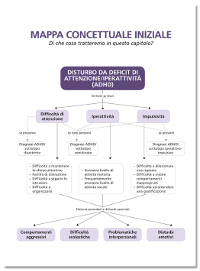 a conceptual map that illustrates the main contents and how they are related
a conceptual map that illustrates the main contents and how they are related
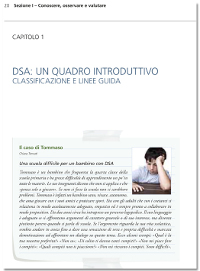 presentation of case examples, through short descriptions, portraying children in their daily typical situations
presentation of case examples, through short descriptions, portraying children in their daily typical situations
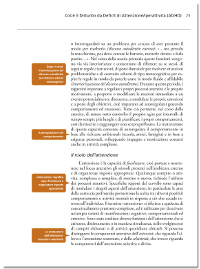 questions and key points alongside each paragraph to tell the reader what it is talked about
questions and key points alongside each paragraph to tell the reader what it is talked about
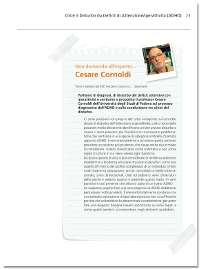 interviews with experts on the most debated and current aspects of the disturbs
interviews with experts on the most debated and current aspects of the disturbs
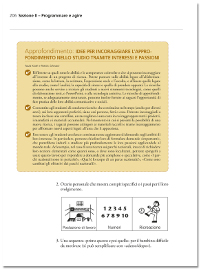 in-depths explanations of meaningful concepts and terms
in-depths explanations of meaningful concepts and terms
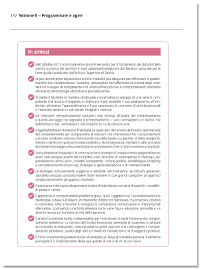 final summary box of the main contents dealt with in the chapter
final summary box of the main contents dealt with in the chapter